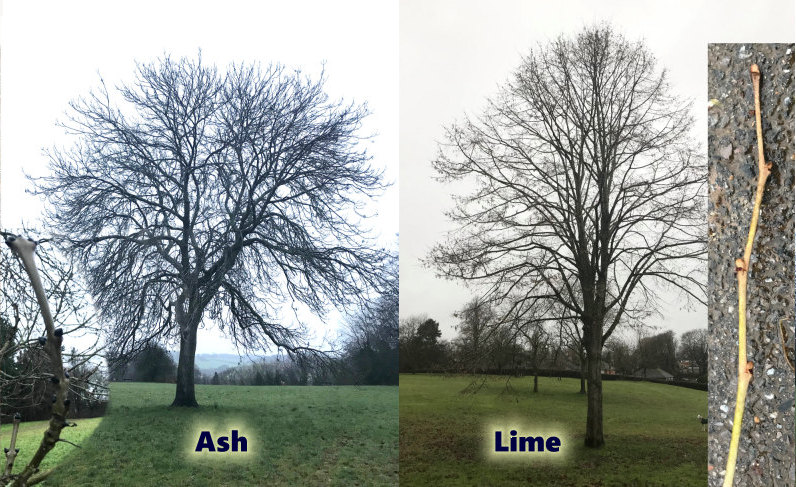Identifying trees in the winter can seem a tricky business as they lie in dormancy and appear dead. But there will be bark to check, buds often visible and the size of the tree itself to take into account. On the whole, broad-leaved deciduous species are very diverse and with a key, quite easy to identify.
There are some main characteristics to look out for when identifying trees in winter:
- General characteristics of the tree. How tall is it? What shape is it? Where does it grow? Are branches drooping or growing upwards?
- Bark. What is the texture and what colour is it? Does it have long fissures (ash) or short (oak)? Is it flaky (hawthorn) or striated (cherry)?
- Twig structure. What colour are they? Are they hairless and warty (silver birch) or hairy and lacking warts (downy birch)?
- Buds. May be opposite, alternate or spiralling on trees.
I’ve stuck my neck out with this one and in order to give examples, I have gone to my local park and compared two trees as below.

If we look at the first photo, the Ash tree, the first characteristic is that it is slim and tall, with a domed top. Twigs are greenish/ grey but it is the bud that is the best identifier – they are opposite each other and are velvety black with larger terminal buds.
Let’s compare this to the Lime tree. Again, it is a tall tree, but it has downward arching branches and twigs. Twigs are green or red when young and waxy-smooth. This time the buds are alternate and reddy-purple, or green. The lime in the photograph is a Common Lime as the twigs are unbranched – Small-leaved Lime twigs are more divided.
One fantastic resource is the ‘AIDGAP Winter Trees: A photographic guide to common trees and shrubs’. Written by Dominic Price and Leif Bersweden, it is a great little book covering broad-leaved deciduous species in the UK. Dom also holds an online Winter Tree ID course every December where you will get your own collection of twigs and the AIDGAP guide posted to you ready for the course (plus a packet of twiglets if you’re lucky). More information can be found on his website . A shorter wait sees a 3 week online course run by the FSC, 20 Feb -27 March 2023. More information can be found here.
